- | 10:00 am
No plug? No problem. This 3D-printed humidifier doesn’t use any electricity
Inspired by the way trees work, this clay humidifier brings comfort with no power consumption, all thanks to some clever 3D printing.
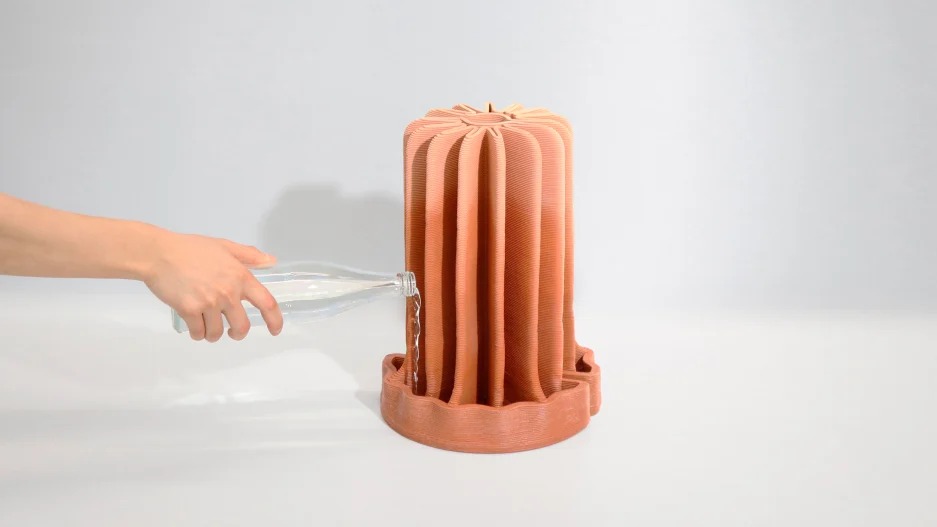
Here’s a clever device that is both deceptively simple and surprisingly effective: a humidifier made of clay, inspired by the way trees absorb and evaporate water, that works without any external power whatsoever. Just physics. And 3D printing.
The device—called the Print Clay Humidifier—was created by designer Jiaming Liu as his master’s graduation project at Folkwang University of the Arts in Essen, Germany. It looks like an almost perfect exercise in smart, environmentally conscious design that brings comfort to the user thanks to traditional low-cost materials and high-tech manufacturing techniques. In fact, it works because of that combination. The uniqueness of the 3D-printed shape is key for the humidifier to work, Liu says, and “it is difficult to make by hand or other production methods of injection molding.”
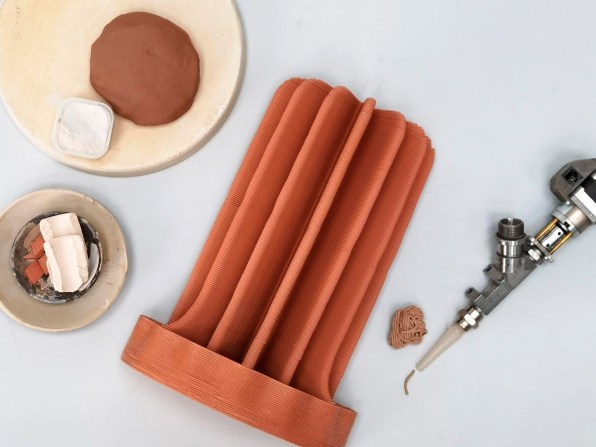
HOW IT WORKS
Liu says that his humidifier was inspired by the way trees work in nature: “The bottom water storage part is like the ground and soil. The extension curves [which are inside the water container] are like the roots of a tree absorbing water. The main part carries water upwards and radiates, like tree trunks and branches.” This evaporation process is the same as used by terracota water vessels to cool down its contents, which is what also powers the all-natural, no electricity-needed Nave AC system.
These three segments are all printed in one piece. The water storage part is a container capable of holding 500 milliliters (0.13 gallons) of water. It is glazed on the outside so it can store the liquid without it wetting the floor, your desk, or whatever surface you place the humidifier on.
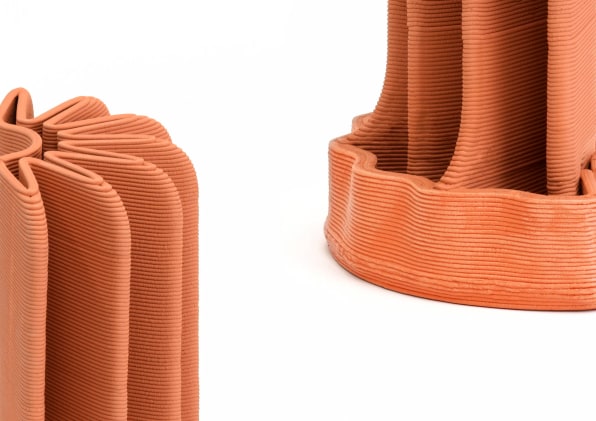
The roots and the upper trunk are not glazed, however, as they needs to be in direct contact with the water and the air to work their magic. They absorb the water in the container through the natural, microscopic network of pores in the clay. As water rises up and saturates the clay, it evaporates, increasing the humidity of the room.
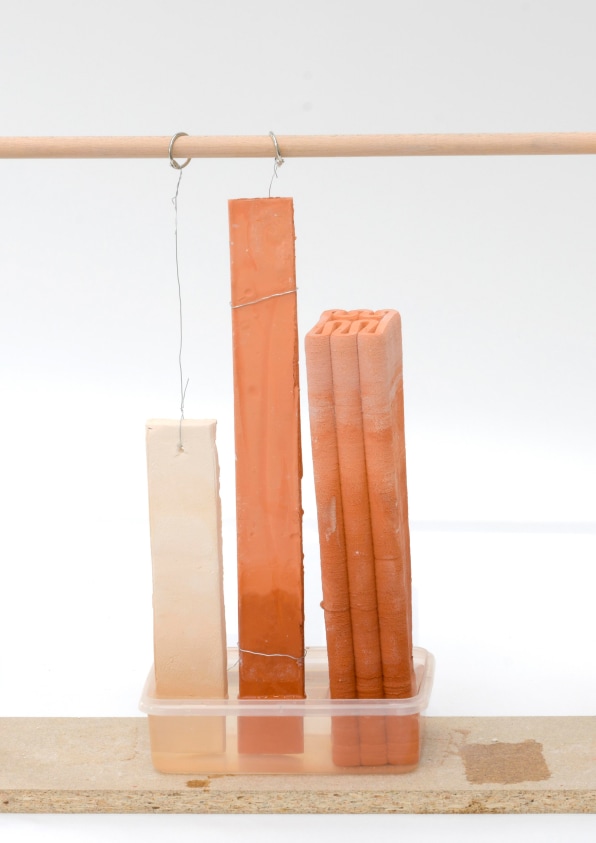
After trying many different structures, he claims that its accordion-like shape is the best for water absorption and evaporation, as the ridges provide a larger contact surface with the air in the most compact footprint (much like how heatsinks and similar contraptions work). Compared with other humidifiers on the market, its unique printing structure enables it to better absorb and evaporate water, he claims. And if you are thinking that a water bowl on a heater will have the same effect, he says that the micropores in the clay are more effective at releasing water into the atmosphere: “The evaporation rate is significantly improved, absorbing more water and evaporating more water faster.”
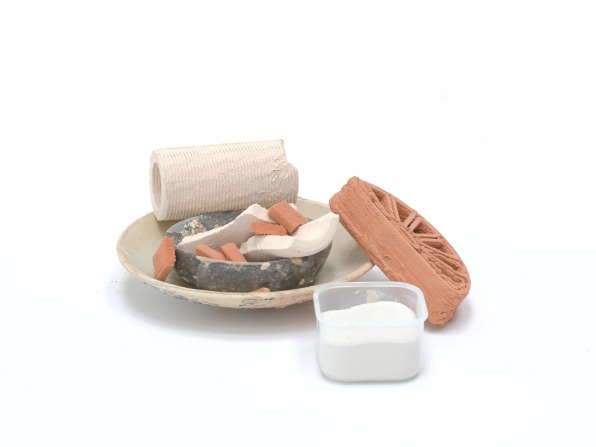
RETURN TO OLD
Liu made his Print Clay Humidifier after trying other materials. The previous model—which he fabricated two years ago, before his masters—was made of concrete. Then he started to conduct a series of tests on printing technology and recycled materials. He experimented with the ceramic 3D printer provided by the school’s ceramic workshop, where he also learned about the problem of industrial waste generated by the ceramics industry.
He found out that a clay-ceramic combination—using one third of recycled ceramic powder—made the structure stronger while boosting its water absorption powers.
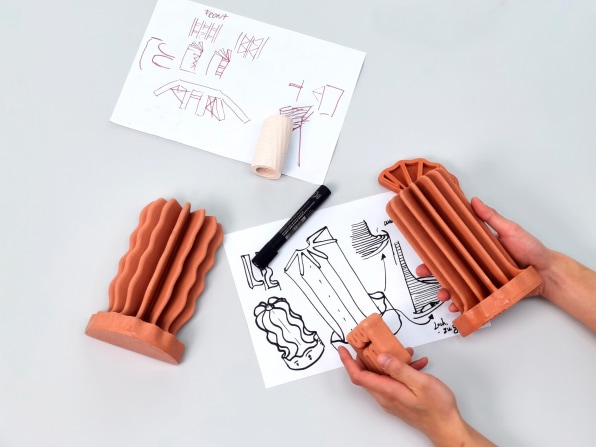
If any companies are interested in making these at scale, Liu says he’d be happy to bring it to market. The design has other uses too, he points out. There’s a smaller 1:2 scale model that works as an aroma diffuser, which will sell like hotcakes at every yoga studio and tree-hugging hippie shop on the planet.
In the middle of an energy crisis and skyrocketing electricity prices, perhaps industrial manufacturers need to pause and take a look at this and other simple, clever inventions based on traditional materials and techniques—like the Nave AC system—which could bring the comfort that people demand while not destroying the planet one watt at a time.





































